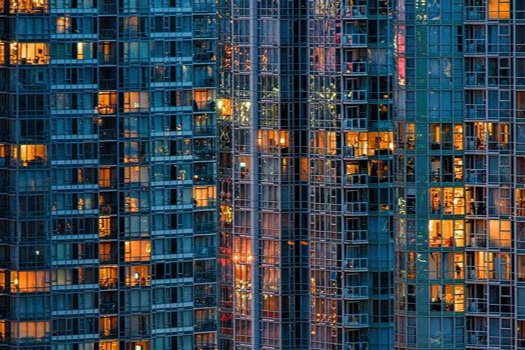
Image by Michaël Muraz
Has stack and pack zoning in the name of climate change strangled CA’s housing market? Outdated sustainability dogma belongs with the dinosaurs, says California Policy Center’s Edward Ring. He recommends CA expand suburban growth—it’s better for the environment than corralling us all into concrete jungles. Reform CEQA too, which is abused by private litigators. In San Jose, CEQA delays building permits by 40 weeks or more.
While preserving California’s beautiful and essential open space, wildlife and diverse ecosytems is a vital priority, this can comfortably co-exist with expanding our development footprint and welcoming even massive new suburban housing development. California is a vast state, covering over 165,000 square miles, with only 8,000 square miles urbanized.
A century ago, California’s population was only 4.7 million; today it is nearly 40 million. Over this period, the vast majority of growth was concentrated around the big coastal cities. Meanwhile, California has over 25,000 square miles of ranchland. Building new homes on quarter acre lots, with four person households, and allocating an equivalent amount for schools, parks, roads, retail and commercial areas would in total only consume 2,000 square miles. This could accommodate 10 million new residents.
Frequently combined with so-called “affordable” housing incentives is California’s State Density Bonus Law. Expanded in 2023, it grants regulatory waivers with reduced allocations for parking if a portion of the housing units, typically at least 10 percent, are restricted to low income or otherwise disadvantaged occupants. Qualifying developments may override local zoning ordinances, exceeding the permitted project density by up to 50 percent, and in some cases up to 80 percent.
The consequences of these laws are not only to bring up the prices for the residents of the unsubsidized portion of the development, but to direct investments into these high density projects instead of into building more single family dwellings.
This exacerbates the shortage of single family dwellings, raising prices. Since, as previously noted, detached homes with yards remain the overwhelming preference for young families, rent control, so-called “affordable” housing mandates, and high density mandates all combine to make families’ housing options not only more expensive, but to lock them out of the home ownership they most desire.
California has among the highest permit costs and the slowest permit approval times in the United States. While CEQA reporting can slow projects down for years, even individual home building permits in California can take several months. The worst is San Francisco, where it takes over 600 days on average for the city to issue a building permit. In San Jose, a standard plan check and approval takes 40 weeks “if all goes well.” In San Diego, turnaround time is between six months to one year. In Oakland, development planning projects take 12-36 months.
As previously noted, the Global Warming Solutions Act of 2006 is another law that has destructively limited development in California. Enacted in 2006 with a goal of reducing greenhouse gas emissions in the state to 1990 levels by 2020, the law has undergone several revisions, each more aggressive than the last. Fundamental to the law as it affects housing is the claim that single family dwellings and suburban “sprawl” cause more greenhouse gas emissions than high density infill. The consequences of this claim are mandates – such as the Vehicle Miles Traveled assessments and fees required with all new housing proposals – that channel new housing to within the footprint of existing urban areas. This artificially inflates land values inside these “urban service boundaries.” But as noted earlier, the claim that low density housing causes disproportionate greenhouse emissions is outdated. Jobs are created within suburbs, and often employers relocate to new suburbs. People work from home. And vehicles are becoming either zero emission or ultra low emission.
Read the whole thing here.
Follow Opportunity Now on Twitter @svopportunity

